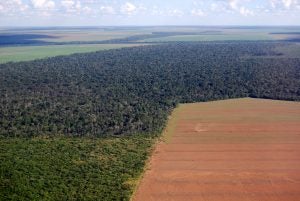Picture it. A fantasy world where all your farm wishes and whims come true. Black soil covering acres upon acres of pristine farmland. Gentle rains that release just the right amount of water to feed thirsty growing plants. Optimal sunshine to stimulate photosynthesis. Insects that only feed on colorful wild flowers planted in fencerows. And so few weeds you can pluck them by hand during a pleasant afternoon stroll.
Unfortunately, we’ve all learned we don’t live in a fantasy world. Our modern lives are pretty cushy, but there are no guarantees. Whether it’s a pandemic or a war in the world’s breadbasket, disruptions to supply chains, worker shortages, and bombs are enough to disrupt the things we take for granted.
It seems like some of the world’s eco-dreamers are finally recognizing this harsh reality.
In a stunning reversal the European People’s Party is abandoning — at least for now — the implementation of the European Union’s Farm to Fork Strategy. Why? Because they see the writing on the wall: Russia’s invasion of Ukraine is going to disrupt European agricultural markets. So the EPP, the European Parliament’s largest political party, is calling on the European Commission to halt so-called green initiatives in favor of developing a “food safety plan” using “reliable forecasts” and “concrete measures” to ensure Europeans don’t have “empty plates.”

To fully appreciate how astonishing this statement is, you have to understand the Farm to Fork Strategy. It’s part of the European Union’s Green Deal, which aims to make Europe carbon neutral by 2050. Farm to Fork focuses on radically changing agriculture on the continent, especially when it comes to inputs. The plan calls for reducing pesticide use by farmers by as much as 50 percent, and reducing fertilizer use by 20 percent. It also calls for farmers to take 10 percent of existing farmland out of production. And, last but not least, Farm to Fork’s goal is to transition 25 percent of Europe’s farmland into organic production.
It doesn’t take a degree in rocket science to realize that’s going to cause some problems with supply. The U.S. Department of Agriculture’s Economic Research Service analyzed the potential effects of Farm to Fork and raised the alarm in 2020. It found the plan would lower European agricultural production by a range of 7 to 12 percent. If only the EU adopted the plan, it would drive up world food prices by 9 percent. And if the plan is adopted globally, production would fall by 11 percent and prices would skyrocket 89 percent.
And that doesn’t even mention the environmental costs. There’s no question that widespread adoption of lower-yielding production methods simply means we need more farmland to produce the same amount of food. Farm to Fork just outsources those additional acres outside the continent. So where will they come from? Unfortunately, that answer too often comes from currently untouched lands, including the all-important rainforest in South America.

But that didn’t matter to the EPP when the world seemed sane and life was easy. It could define sustainability and dictate the arbitrary and radical terms to Europe’s lowly farmers. So what if food prices rise needlessly and make it harder for low-income households to make ends meet. As long as EU politicians went to bed with full stomachs they could feel good about all the sacrifices they made to support Mother Nature!
All of that came crashing down as Russian tanks crossed into Ukraine and the shelling started. Farmers can’t plant fields occupied by foreign militaries. So the price of food and fuel started climbing. And suddenly empty plates and grumbling tummies became all too real.
The EPP’s change in policy position is astonishing. They’ve completely abandoned the fantasy where agriculture can use primitive production practices to meet modern demand. In other words, farmers need to grow food. Lots of food. And they shouldn’t be hindered by an eco-fairytale of what agriculture should be.
Welcome to the real world.
Amanda Zaluckyj blogs under the name The Farmer’s Daughter USA. Her goal is to promote farmers and tackle the misinformation swirling around the U.S. food industry.



